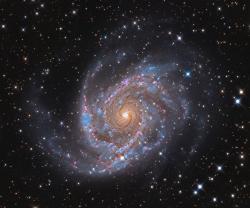
Howdy, Stranger!
It looks like you're new here. If you want to get involved, click one of these buttons!
BlockHead
About
- Username
- BlockHead
- Joined
- Visits
- 257
- Last Active
- Roles
- Member, Administrator
Comments
-
The data you have is probably fine... Please try to run it again, but with the normal method of CC and not AUTOCC... then see if the issue persists.You can also watch my video in FastTrack Training that shows the issue I was experiencing..which loo…
-
There are some rules (like deconvolution before noise reduction). And others that are optimal in certain situations. Some processes are applied both on linear or stretched and depending the order changes! There isn't master list- but it is variable…
-
Well..you know that noise reduction messes up your ability to measure stars and noise.So BXT is before NXT for example.Noise reduction also tends to correlate pixels that were not originally related. Then as you increase the contrast or brightness t…
-
It is a good idea.My similar solution is to create links to various parts of videos (just like what is done on YouTube).These would link to the precise place in a given video where something is explained or demonstrated. In your case I would generat…
-
I guess I should have shown a "normal" dark...but I thought most people have seen these.-the Blockhead
-
The pedestal will not affect the rejection. The pedestal is simply an offset used when calibrating (subtracting a dark frame). Rejection occurs much later. You should apply the zeros to the debayered (or registered, whichever is easier) images. It d…
-
As I mention in the video- equal amounts of RGB values ... basically noise- which is a neutral color is expected. The AUTOCC is fine in your case. What could I say to make that clearer in the video? -the Blockhead
-
This is fine. So you should integrate all of these images together and utilize normalization. You did not show this image. The information from the very rotated image can see be incorporated into the the other two (which are similar). The parts of …
-
Good method!-the BLockhead
-
I will be attending to this.I am remaking FastTrack.It will have both OSC and Mono workflows as part of it. -the Blockhead
-
Mark... I figured out the issue.This is actually important. The issue is the automatic Cosmetic Correction. It is possible to have it do some weird stuff. You can turn *this* off and use your darks... then let me know if we are happier. I have dem…
-
You know what.. your issue may have nothing to do with crappy darks.I have been reprocessing data...and I believe *I* have encountered the same issue! Can you please do me a favor. With your problem image... please split the channels. Look at each o…
-
Hi Bryn, Can you upload an example JPEG that shows your work? You will need to put it on a server you have access to and share the link. Based on your question- it is not clear to me that you are optimizing the normalization of images.The first poin…
-
Yeah..having the overscan or not having it would change the dimensions of the dark frame. If you had lights with no overscan..and darks WITH overscan...the darks would not match the lights. Dimensions of the images is always required to match. -the …
-
There is another way, of course. You could simply move the data that was taken on the other nights into the same folder that matches the keyword value of the necessary flats. But anyway... it seems like you are all set. -the Blockhead
-
Thanks for posting your images..that is helpful. Did you notice how "faded" your image is. It isn't just mottling. You have a couple of issues.It appears your darks are somehow no good (not matching). Here is what is happening... 1. When you do no…
-
If I understand... my scenario was that the flats did not change for a small number of nights. So Flats of 20250207 could be used to calibrate data on the night of 20250208 and 20250209 for example. That would be the usage I likely demonstrated. If…
-
HI Jolhn, Perhaps you haven't seen my recent e-mails. I am currently making the new site. -the Blockhead
-
Yes, you can certainly stretch the Ha and blend it in (using screen) when both the Ha and RGB are non-linear. This is another technique. You can both colorize the Non-linear Ha and blend it into the RGB using the ImageBlend script. This is the best…
-
And you have these flats in a folder called ""Flat" in the folder Night_20250227 ? According to your screen shot you do not... OR the word "night" is also in the filename. You will need to present everything I am afraid- pictures of your folders, o…
